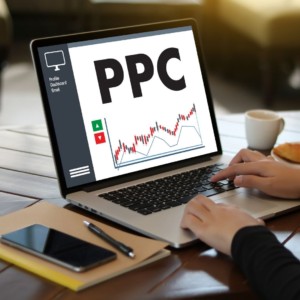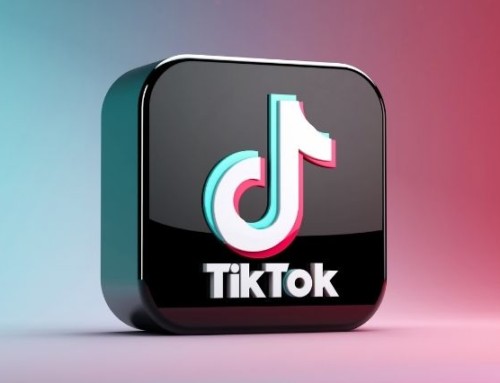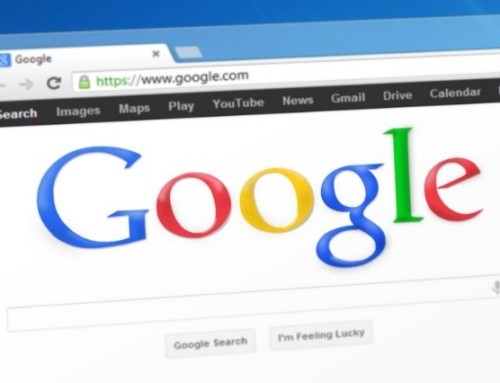You can’t visit a social platform or search online without being served up ads every step of the way. Paid ads are everywhere. As a matter of fact, over 7 million advertisers invested a total of $10.01 billion into PPC ads in 2017. 85% of consumers use the internet to search for local businesses. Brand awareness can be increased up to 80% with paid ads. Are paid ads right for your small business? Maybe. Here’s what you need to consider before you start a PPC campaign.
What are paid ads?
 When it comes to advertising, you have paid, earned, and owned advertising. Paid ads can be through Google Ads, on social media platforms, or any other online platform where you’ll pay for clicks or pay to have your ad served up to a certain number of people per thousand. Most small businesses start with social media ads like Facebook or LinkedIn or opt for Google Ads. In any case, paid ads mean it’s going to cost you money. If you’re thinking of spending money to run ads or an ad campaign, there are five questions you need to consider to determine if it’s right for you.
When it comes to advertising, you have paid, earned, and owned advertising. Paid ads can be through Google Ads, on social media platforms, or any other online platform where you’ll pay for clicks or pay to have your ad served up to a certain number of people per thousand. Most small businesses start with social media ads like Facebook or LinkedIn or opt for Google Ads. In any case, paid ads mean it’s going to cost you money. If you’re thinking of spending money to run ads or an ad campaign, there are five questions you need to consider to determine if it’s right for you.
Who is your target audience?
If you’ve created a small business marketing strategy, you already have your answer! Your target audience includes those people who you can qualify as potential customers for your business. When it comes to paid advertising and your target audience, you want to consider who you want to see these ads? That’s your target audience. Most of the social platforms can help you target your ads to this audience based on interests, demographics, etc., but you still should have a general idea in mind; casting too wide a net will quickly eat through an ad budget without any results if you’ve gone through the exercise of creating buyer personas, even better for more effective targeting!
Where does your target audience reside?
 So, how can you reach your target audience? You’ll need to know where they are to have your ads reach them. Is your target audience on social media? If so, which platforms? The more you understand where they reside, the better chance you’ll have in reaching them. Again, almost all platforms are going to be able to assist you with reaching your desired audience where they are. Google Analytics can assist in telling you the age group or gender that spends the most time on your website currently, which is a great place to start.
So, how can you reach your target audience? You’ll need to know where they are to have your ads reach them. Is your target audience on social media? If so, which platforms? The more you understand where they reside, the better chance you’ll have in reaching them. Again, almost all platforms are going to be able to assist you with reaching your desired audience where they are. Google Analytics can assist in telling you the age group or gender that spends the most time on your website currently, which is a great place to start.
What’s your goal in doing paid ads?
You’re going to want to have a goal in mind, as you’re going to be paying for clicks, views, purchases, conversions, and more. Here are a few common goals:
- Visits to your website
- Calls
- Filling out a lead form
- Asking for a free trial
- Requesting a demonstration of your product
- Downloading a content piece
- Signing up for your newsletter
Without a goal, the success of your campaign can’t be accurately measured. Do you want people to see your ad and build brand awareness or purchase a product or service to increase sales? What specifically are you hoping for?
Determine your paid ad budget
Before you start running your ads, you’re going to want to determine a budget. If you’re working with a small business marketing consultant, ask for their advice on a good starting budget. If you’re running ads by yourself, then it’s best to start small, measure outcomes, then reevaluate. Keep in mind that at some point, you’ll want to measure ROI, so the more you can tie paid ads to revenue, the easier it is to determine success.
Was your paid ad a measurable success?
 What do you consider a successful campaign? More visits to your site? More phone calls? A certain amount of contact forms filled out? Here’s a quick guideline that can help decide how to measure if it was a success:
What do you consider a successful campaign? More visits to your site? More phone calls? A certain amount of contact forms filled out? Here’s a quick guideline that can help decide how to measure if it was a success:
ROAS
ROAS is the amount of revenue your business is earning for each dollar spent on advertising. ROI or return on investment.
CPC
Cost per click (CPC) can be helpful if you know how paid traffic converts on your website. If 10% of every person that visits the page buys from your business, and the average purchase value is $50, then you should earn an average of roughly $500 for every 100 people that land on the page. A profitable CPC, therefore, is anything less than $5.00. Here’s another way of looking at it: if you sell a widget for $10 but every click costs you $12, that’s NOT a good campaign!
CPA
Cost per acquisition (CPA) means different things to different companies. It can be everything from a lead to a purchase or to a contract signed. If you know the value of acquiring a customer in your business, you can understand what a profitable CPA is. Clicks aren’t the same as acquisition; acquisition means you’ve actually SOLD something.
CTR
Click-through rate (CTR) helps you determine how effective your ad is at getting your potential customer to your website or landing page.
Doing some of this legwork upfront will help you decide if paid ads are right for your small business. Not sure how to determine all this? Reach out to us at Strategic Marketing Services! We can help with all your small business paid advertising needs.
- Marketing Tactics That Your Small Business Can Do for Free - January 10, 2024
- How to Create Images for Your Small Business Website - December 6, 2023
- How Small Businesses Benefit from Referrals - November 6, 2023





